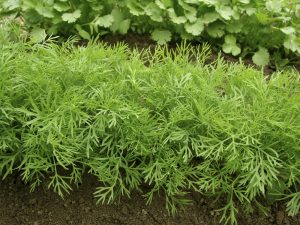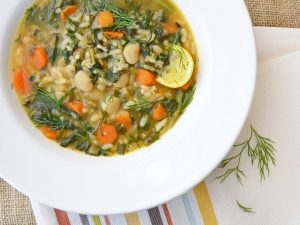 Dill (Anethum graveolens) is an annual herb in the celery family Apiaceae. also called in /guajrati language as સુવાદાણા. It is the only species in the genus Anethum. Dill is widely grown in Eurasia where its leaves and seeds are used as a herb or spice for flavouring food.
Dill (Anethum graveolens) is an annual herb in the celery family Apiaceae. also called in /guajrati language as સુવાદાણા. It is the only species in the genus Anethum. Dill is widely grown in Eurasia where its leaves and seeds are used as a herb or spice for flavouring food.
Dill grows up to 40–60 cm (16–24 in), with slender hollow stems and alternate, finely divided, softly delicate leaves 10–20 cm (4–8 in) long. The ultimate leaf divisions are 1–2 mm (0.04–0.08 in) broad, slightly broader than the similar leaves of fennel, which are threadlike, less than 1 mm (0.04 in) broad, but harder in texture. The flowers are white to yellow, in small umbels 2–9 cm (0.8–3.5 in) diameter. The seeds are 4–5 mm (0.16–0.20 in) long and 1 mm (0.04 in) thick, and straight to slightly curved with a longitudinally ridged surface.
Fresh and dried dill leaves (sometimes called “dill weed” to distinguish it from dill seed) are widely used as herbs in Europe and central Asia.
Like caraway, the fernlike leaves of dill are aromatic and are used to flavor many foods such as gravlax (cured salmon) and other fish dishes, borscht and other soups, as well as pickles (where the dill flower is sometimes used). Dill is best when used fresh as it loses its flavor rapidly if dried; however, freeze-dried dill leaves retain their flavor relatively well for a few months. Dill seed, having a flavor similar to caraway but also resembling that of fresh or dried dill weed, is used as a spice. Dill oil is extracted from the leaves, stems and seeds of the plant. The oil from the seeds is distilled and used in the manufacturing of soaps. Dill is the eponymous ingredient in dill pickles: cucumbers preserved in salty brine and/or vinegar.
